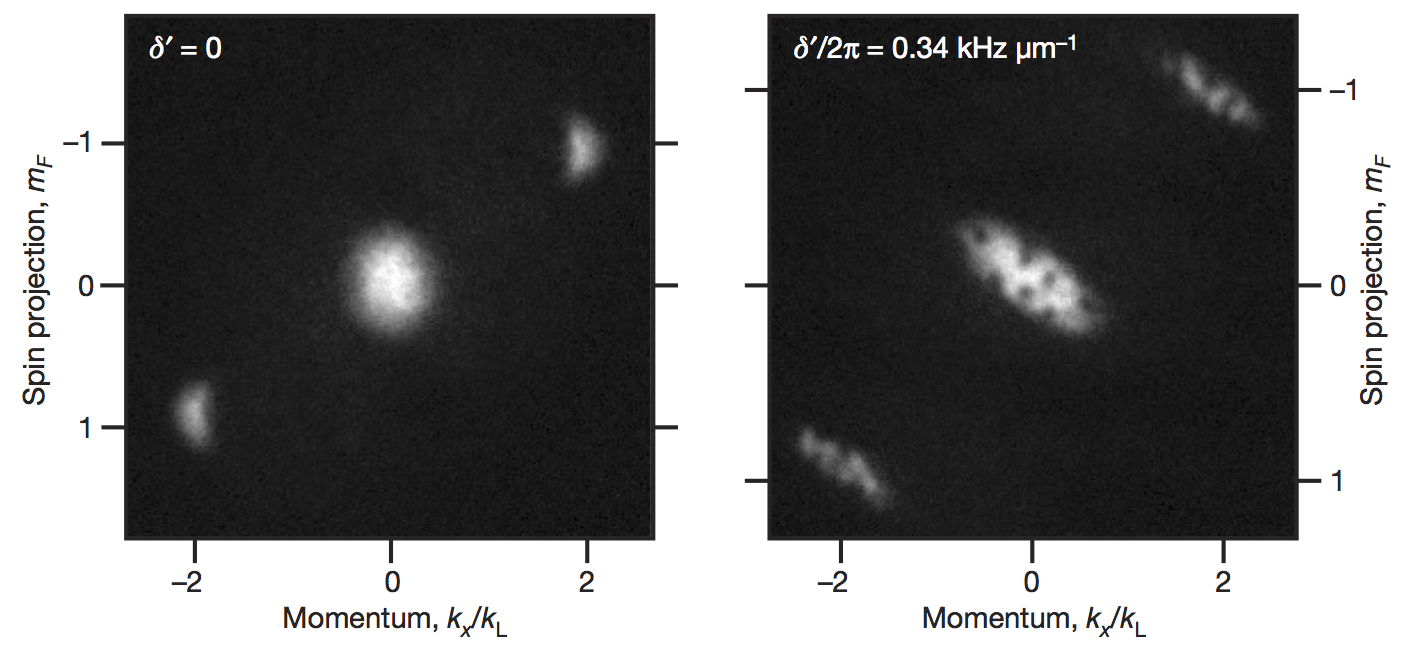Synthetic magnetic fields for ultracold neutral atoms

Ultracold atoms are an excellent system to realize important models in condensed matter physics, owing to its nearly disorder-free and tunable properties. One of the most intriguing topics is the quantum-Hall physics of 2D electronic systems in a strong magnetic field. Current experiments mostly use systems of rotating gases to create synthetic magnetic fields for neutral atoms in the rotating frame. However, rotating systems are limited by various technical matters, and consequently it is difficult to create sufficiently large fields required for the quantum-Hall regime. Recent theoretical proposals avoiding this limitation mostly involve a spatially dependent light-atom coupling between internal states. The atoms adiabatically remain in a spatially varying dressed state, where the Berry’s phase corresponds to an effective vector potential. With appropriate spatial dependence, the vector potential has a nonzero curl and yields a synthetic magnetic field.
We have experimentally realized such a synthetic magnetic field for the first time, and observed vortices in a neutral 87Rb Bose-Einstein condensate. Fig. 1ab show the setup of our BEC dressed by a Raman coupling within the F=1 manifold of the electronic ground state. The Raman coupling is characterized by a Rabi frequency ΩR and detuning δ. Fig 1c illustrates the modified dispersion curves (colored) of the Raman-dressed states, where our BEC is loaded into the lowest energy branch (red) with an effective vector potential A*(δ) along x, set by the Raman detuning δ (Fig. 1d). Consequently, a spatial gradient of detuning δ′ along y gives rise to a gradient in vector potential, whose curl is equal to a synthetic magnetic field B*=∇×A*=δ′ (dA*/dδ) along z. Fig. 1ef show the spin-resolved TOF images of the dressed BEC in a zero detuning gradient (e), and in a nonzero gradient with vortices (f). Fig. 2 shows that the vortex number increases with the detuning gradient δ′, which is proportional to the magnetic field B*. The vortices appear only when the field exceeds a critical value, indicating the energy cost for creating a single vortex given a finite system size.
Our experiment has demonstrated an optically induced magnetic field which is stable in the laboratory frame. This is in contrast to the systems of rotating BECs, where due to the complication of rotation, the condensate with vortices is either in a metastable excited state or is subject to dissipation from time-dependent perturbations. Another superior feature in our approach is we can easily add optical lattices. The lattice along the direction of synthetic field can divide the BEC into an ensemble of 2D systems. With suitable lattice configuration, we should be able to reach the quantum-Hall regime with ~ 200 vortices and < 200 atoms in each 2D system, and a practical ~20nK interaction energy.
Abstract: Neutral atomic Bose condensates and degenerate Fermi gases have been used to realize important many-body phenomena in their most simple and essential forms, without many of the complexities usually associated with material systems. However, the charge neutrality of these systems presents an apparent limitation—a wide range of intriguing phenomena arise from the Lorentz force for charged particles in a magnetic field, such as the fractional quantum Hall effect in two-dimensional electron systems. The limitation can be circumvented by exploiting the equivalence of the Lorentz force and the Coriolis force to create synthetic magnetic fields in rotating neutral systems. This was demonstrated by the appearance of quantized vortices in pioneering experiments on rotating quantum gases, a hallmark of superfluids or superconductors in a magnetic field. However, because of technical issues limiting the maximum rotation velocity, the metastable nature of the rotating state and the difficulty of applying stable rotating optical lattices, rotational approaches are not able to reach the large fields required for quantum Hall physics. Here we experimentally realize an optically synthesized magnetic field for ultracold neutral atoms, which is evident from the appearance of vortices in our Bose–Einstein condensate. Our approach uses a spatially dependent optical coupling between internal states of the atoms, yielding a Berry’s phase sufficient to create large synthetic magnetic fields, and is not subject to the limitations of rotating systems. With a suitable lattice configuration, it should be possible to reach the quantum Hall regime, potentially enabling studies of topological quantum computation.
References:
1. Synthetic magnetic fields for ultracold neutral atoms Y.-J. Lin, R. L. Compton, K. Jiménez-García, J. V. Porto, & I. B. Spielman., Nature 462, 628-632 (2009)
2. Bose-Einstein Condensate in a Uniform Light-Induced Vector Potential Y.-J. Lin, R. L. Compton, A. R. Perry, W. D. Phillips, J. V. Porto and I. B. Spielman., Phys. Rev. Lett. 102, 130401 (2009).

